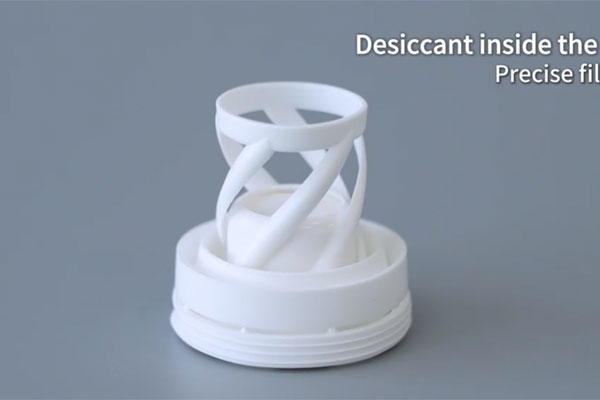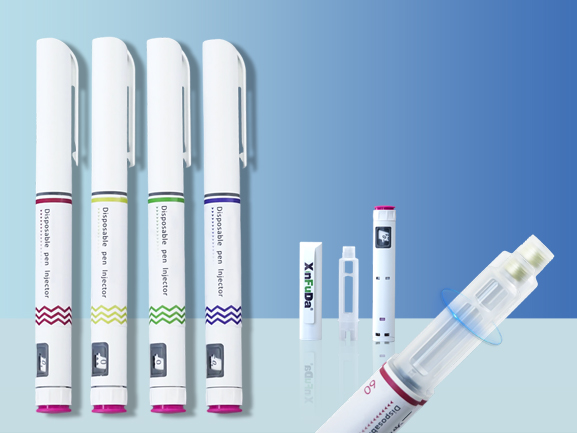In the pharmaceutical packaging industry, effervescent tablet packaging has become a popular choice for many pharmaceutical companies due to its excellent moisture-proof properties and convenient usage. It is particularly ideal for solid medications that require high moisture resistance, such as vitamin C effervescent tablets and capsules. However, with a variety of cap options available, selecting the right cap based on the characteristics of the medication has become a key consideration in packaging design. This article provides a detailed introduction to the two main types of caps for effervescent tablet packaging—spring caps and non-spring caps—to help you make an informed decision.
1. Spring Caps: Secure and Moisture-Proof, Protecting Tablet Integrity
Spring caps are a common design in effervescent tablet packaging. Their unique feature is a spiral-shaped spring made from soft LDPE (low-density polyethylene) material. The moderate flexibility of LDPE ensures that the spring can effectively hold the tablet in place, preventing breakage during transportation due to bumps and vibrations, without exerting excessive pressure that could damage the medication. This design not only reduces transportation risks but also ensures the integrity and safety of the product.
For fragile medications with high moisture-proof requirements, such as vitamin C effervescent tablets, spring caps are the ideal choice. They provide excellent moisture resistance while using the spring’s stabilizing effect to protect the tablets from external impacts, ensuring the medication remains in optimal condition when it reaches consumers.
2. Non-Spring Caps: Easy to Open, Suitable for Diverse Dosage Forms
Unlike spring caps, non-spring caps do not feature a spring mechanism but still offer excellent moisture-proof performance. These caps are designed for easy upward opening, allowing users to access the medication effortlessly without twisting.
Non-spring caps are more suitable for chewable vitamin tablets, small candy-coated tablets, and capsule medications. These dosage forms are relatively stable and less prone to damage from minor vibrations, eliminating the need for additional spring pressure. The simple opening mechanism of non-spring caps also enhances user convenience, making medication usage more straightforward.
3. Selecting the Right Cap Based on Medication Characteristics
When choosing a cap for effervescent tablet packaging, pharmaceutical companies should carefully consider the dosage form and storage requirements of the medication. For fragile medications with high moisture-proof needs, such as vitamin C effervescent tablets, spring caps are the better option. For more stable and versatile dosage forms, such as chewable vitamins or capsules, non-spring caps provide easier access while maintaining good moisture resistance.
Additionally, factors such as packaging costs, production efficiency, and user experience should be taken into account to make the best decision. By selecting the appropriate cap, pharmaceutical companies can not only improve moisture resistance and transportation safety but also optimize user experience and enhance brand reputation.
In conclusion, the choice of cap for effervescent tablet packaging should be tailored to the specific needs of the medication. Both spring caps and non-spring caps have their advantages, and only by thoroughly understanding the medication’s requirements and packaging features can the most suitable option be selected.



没有评论:
发表评论